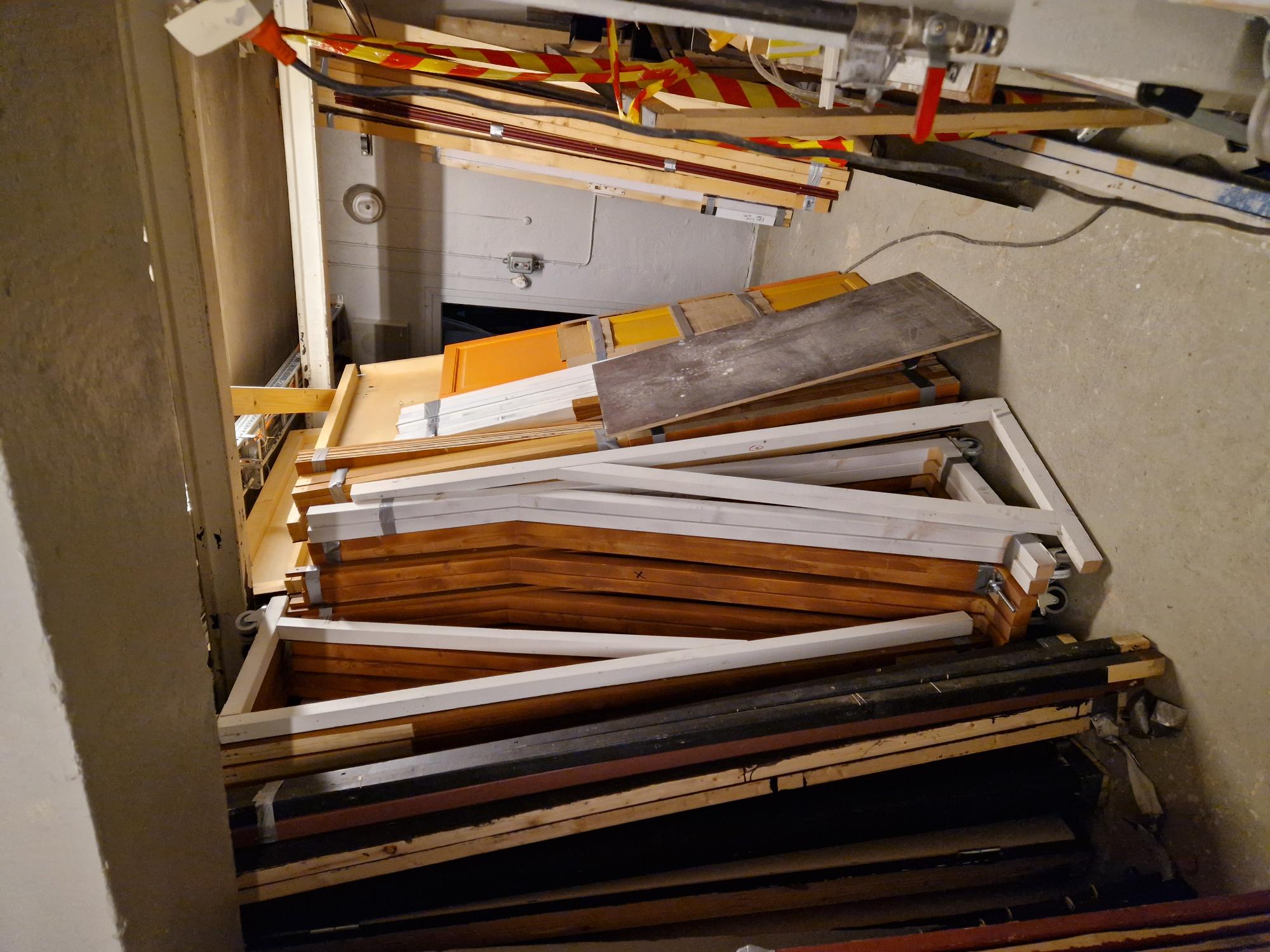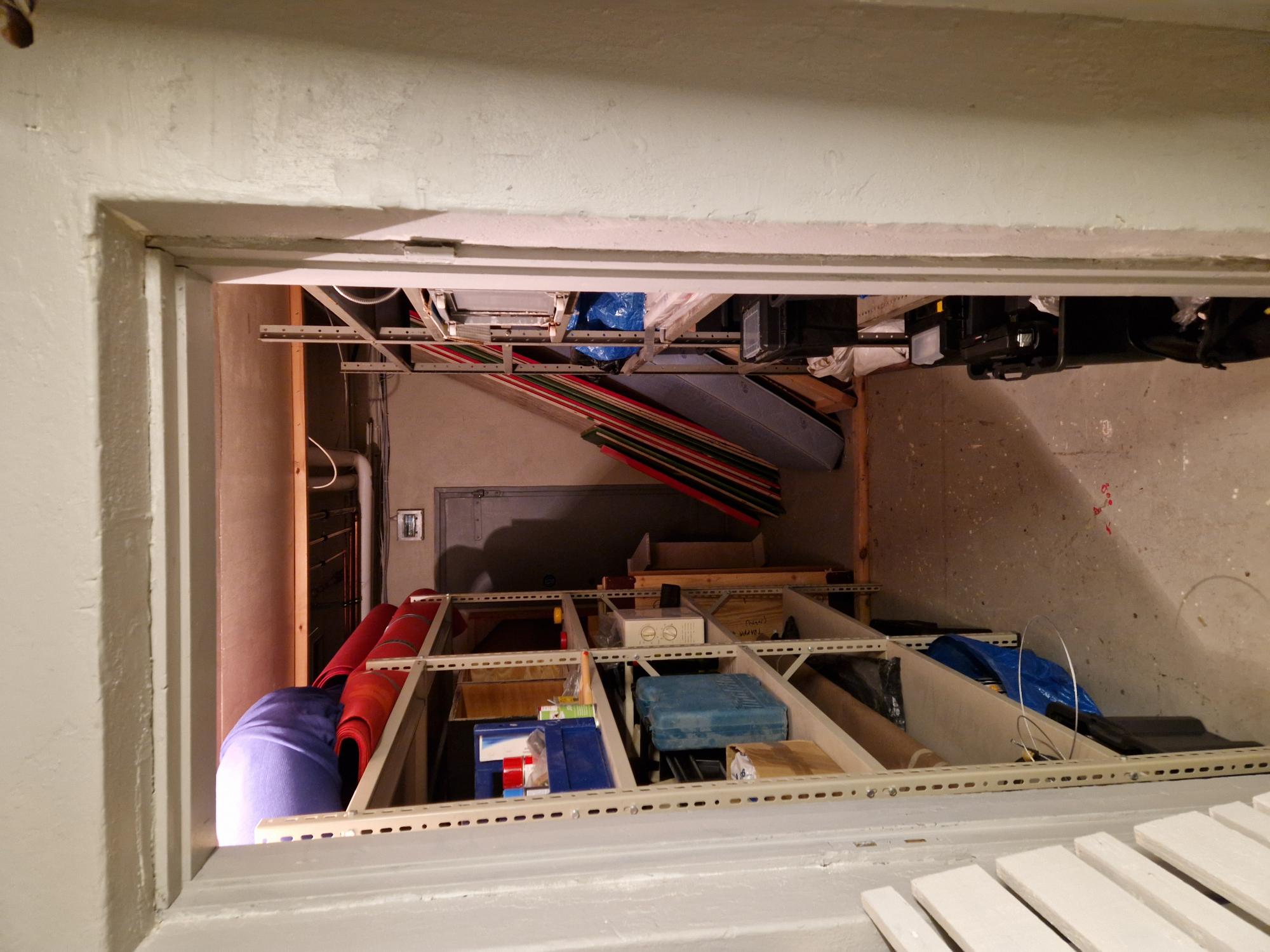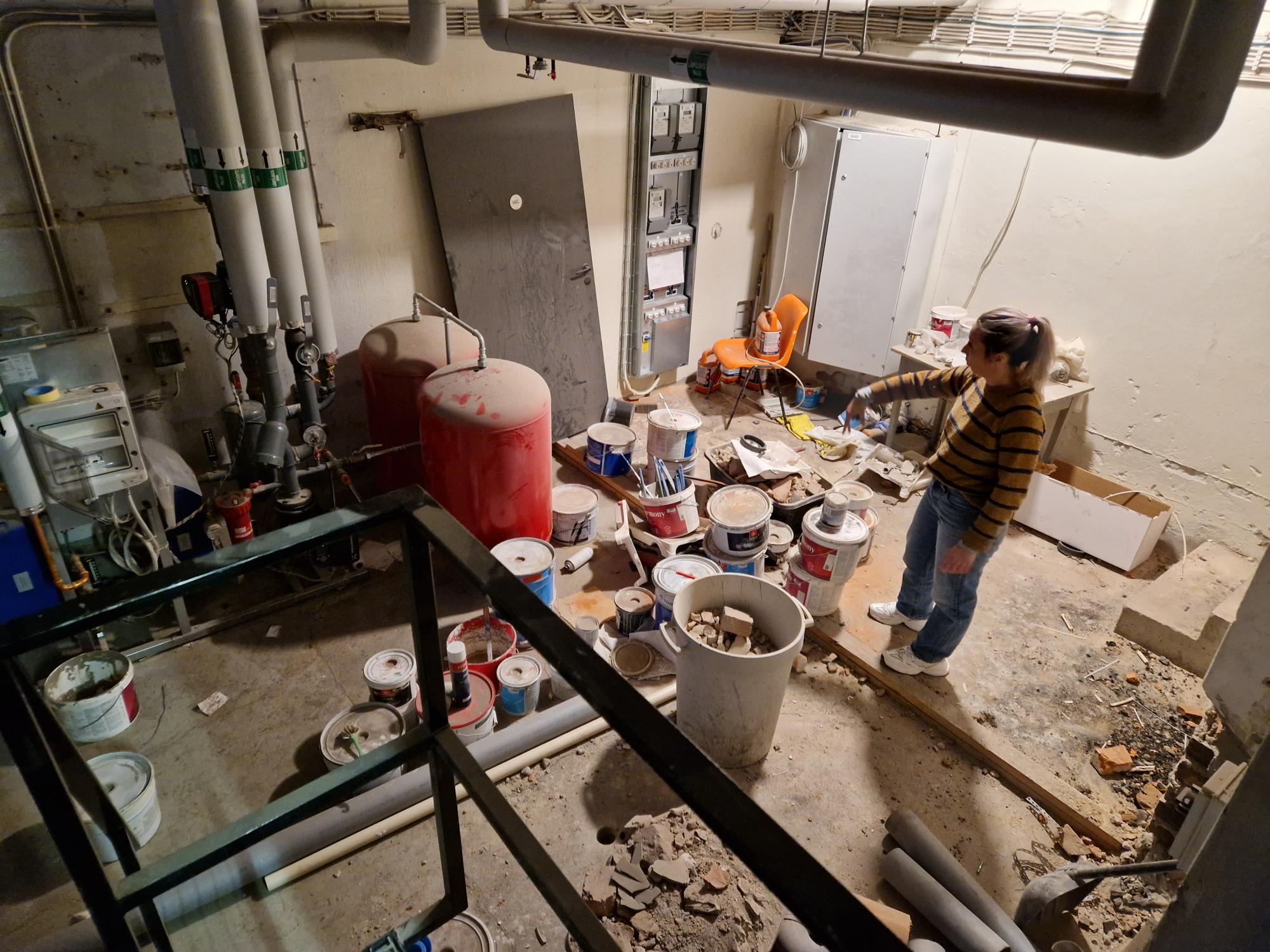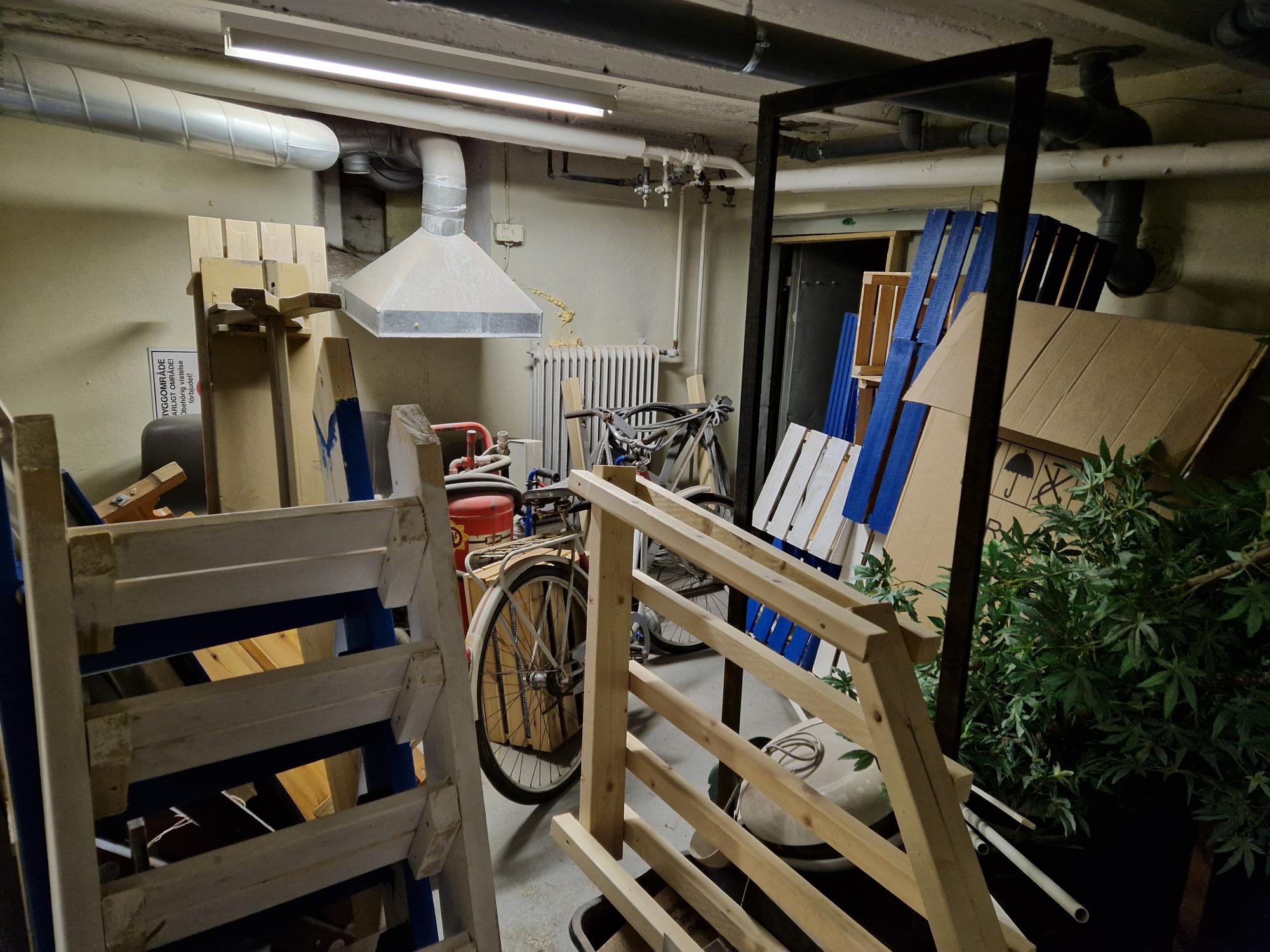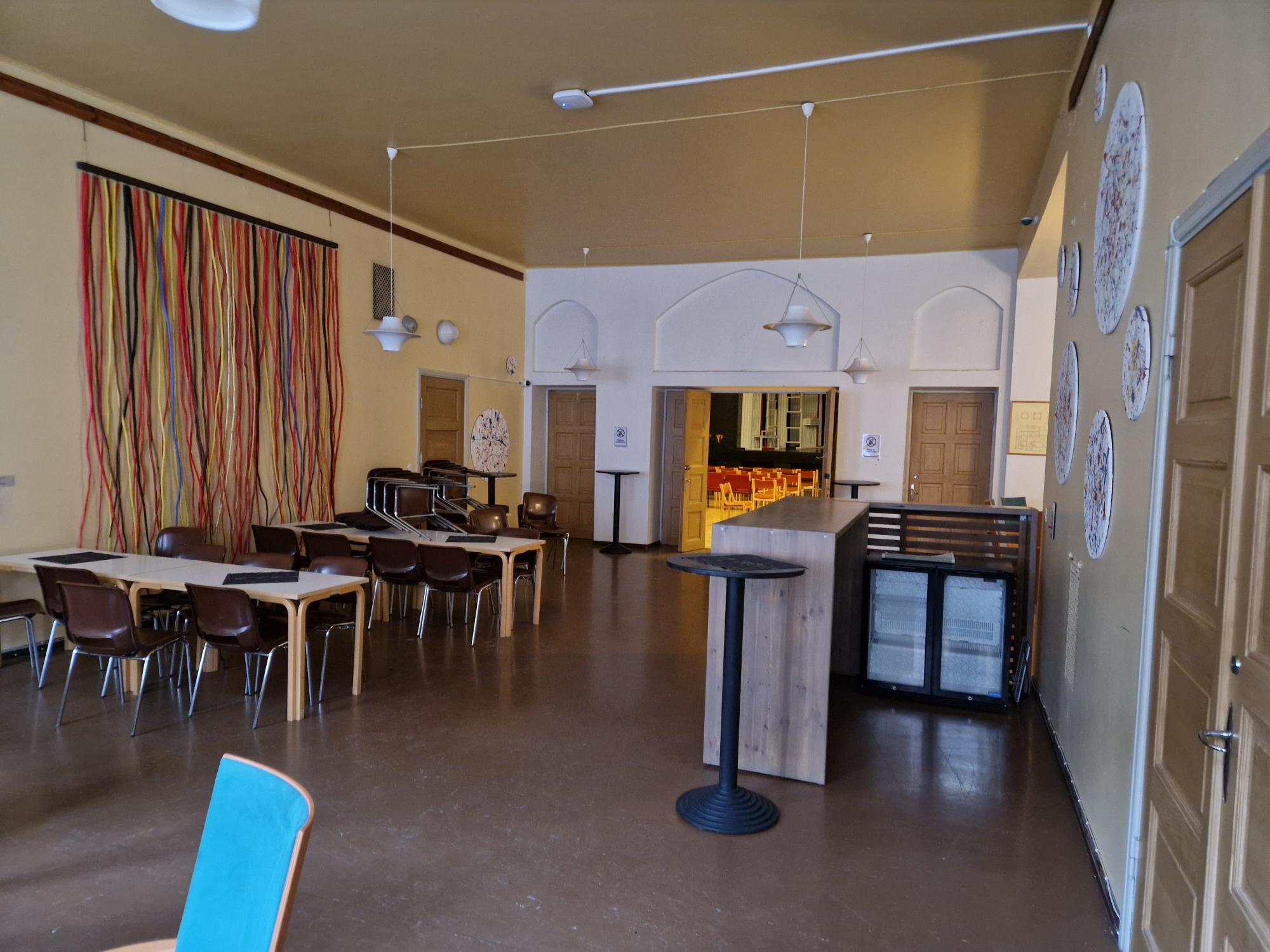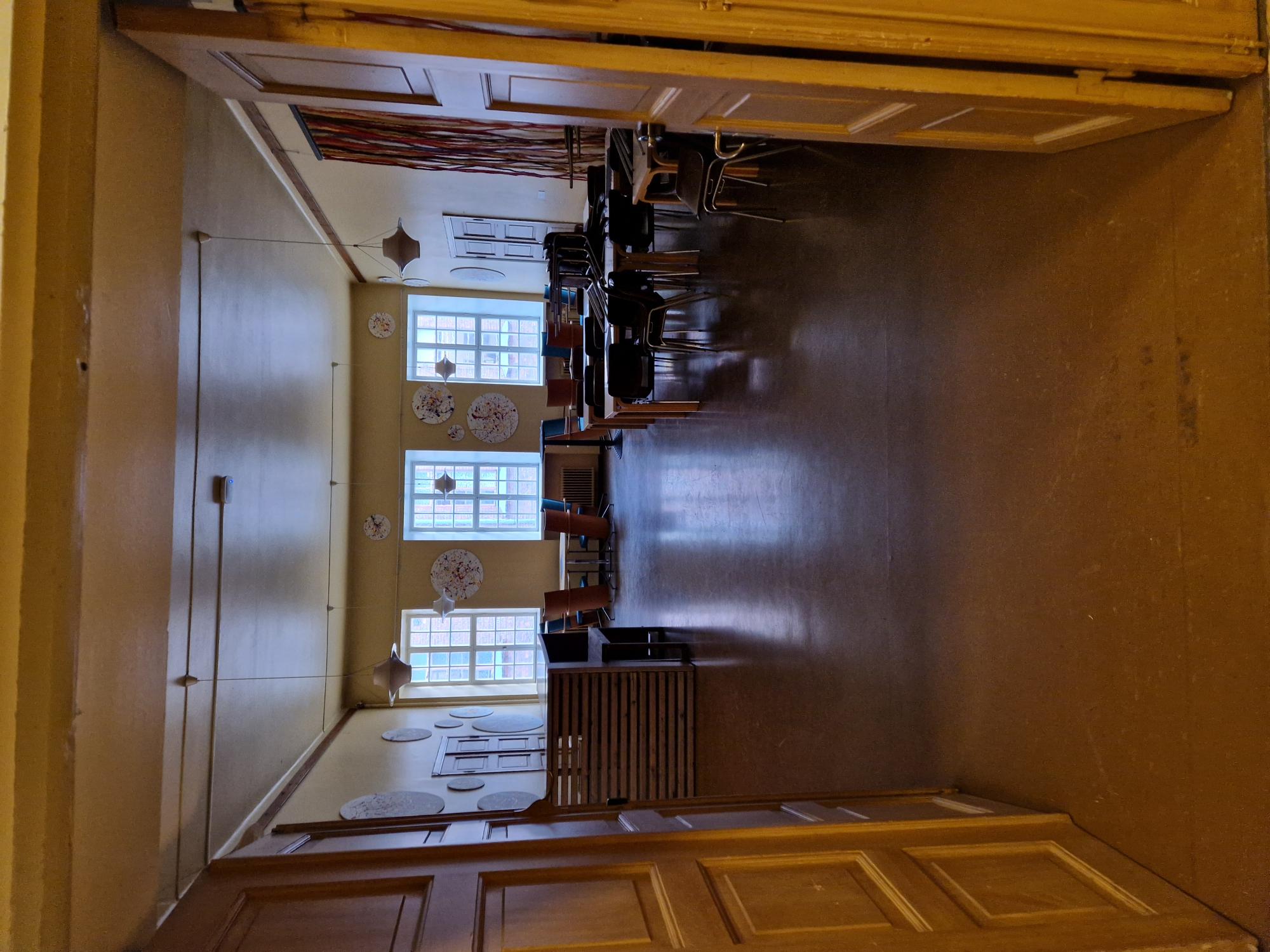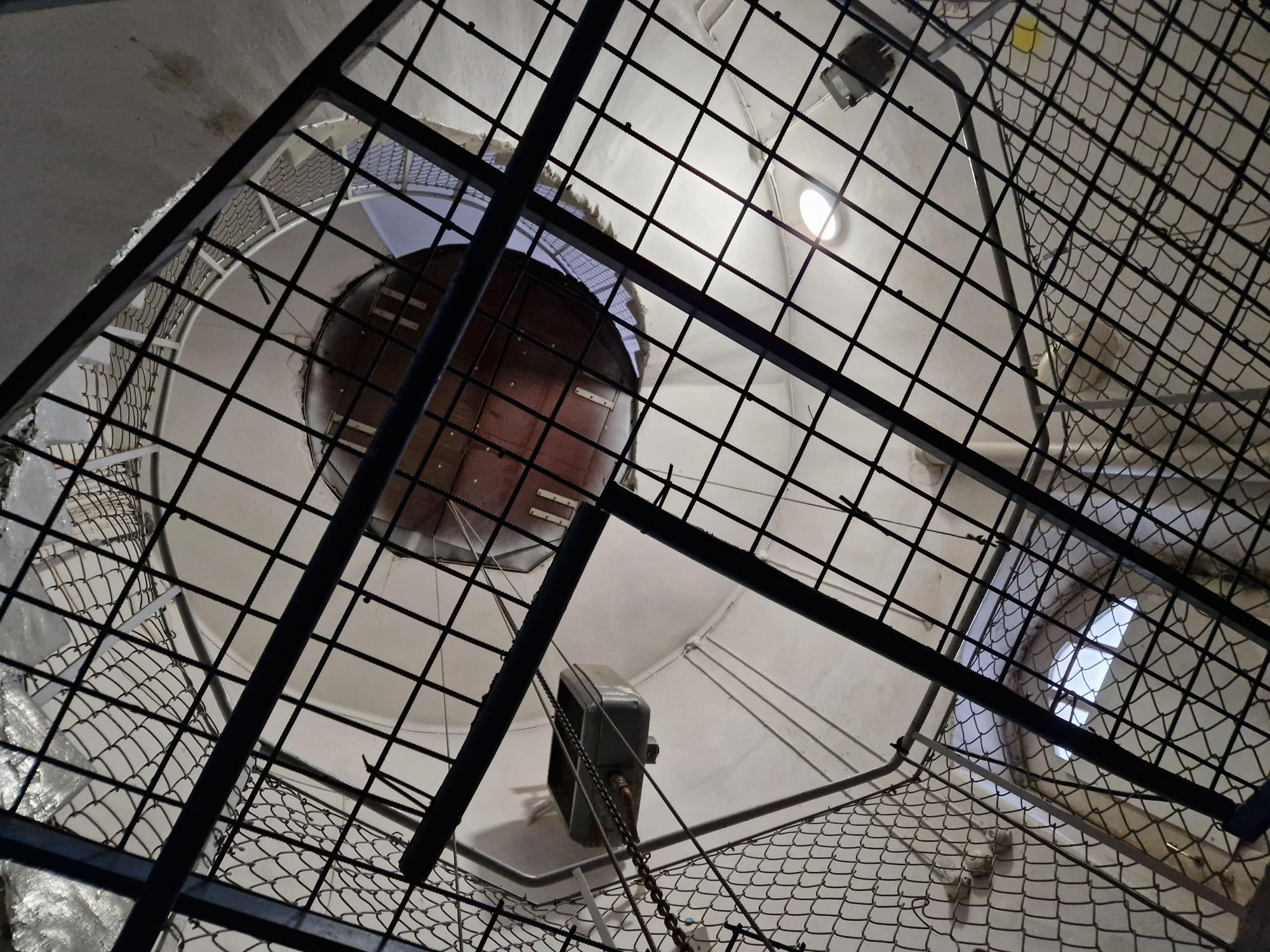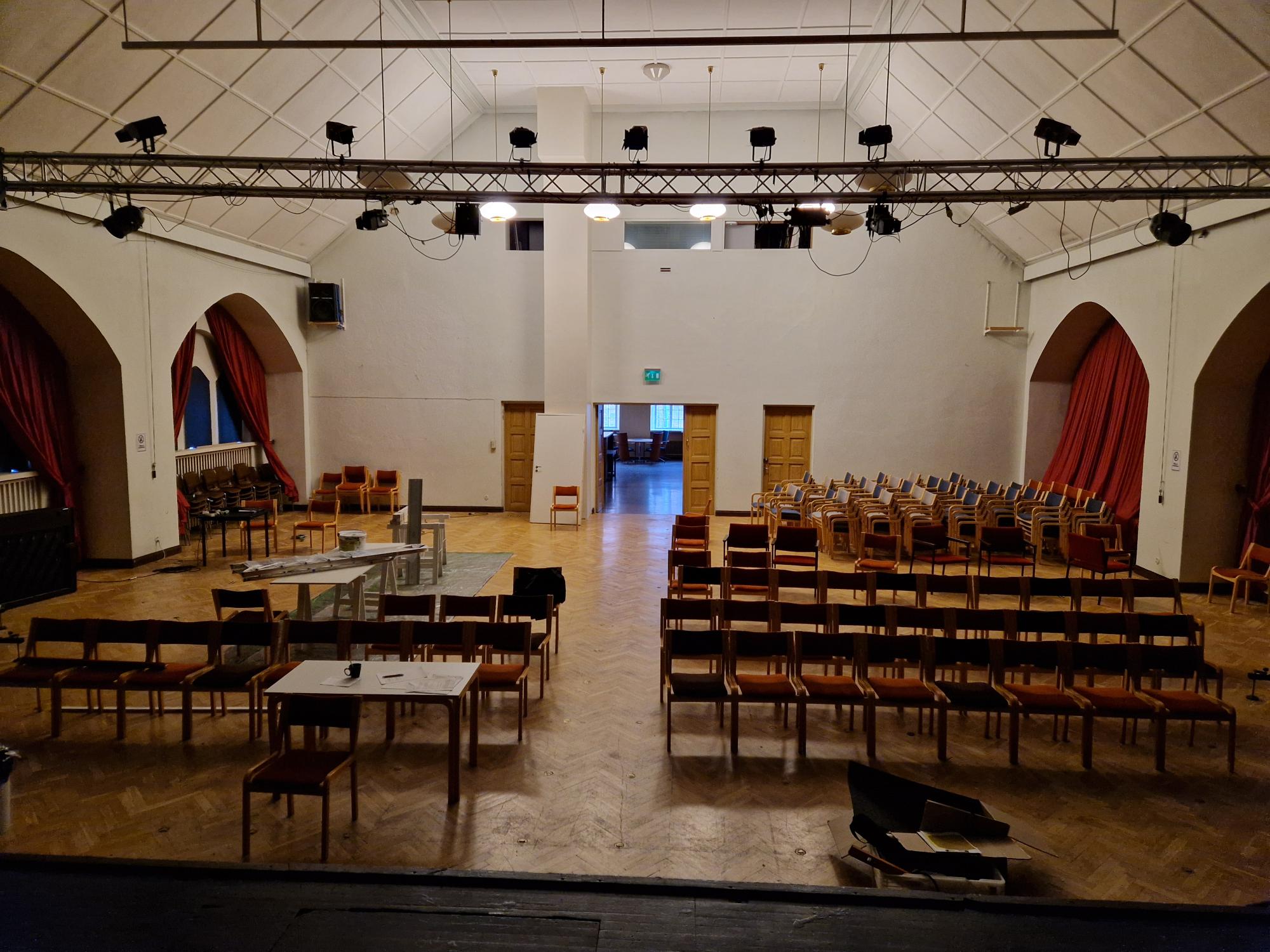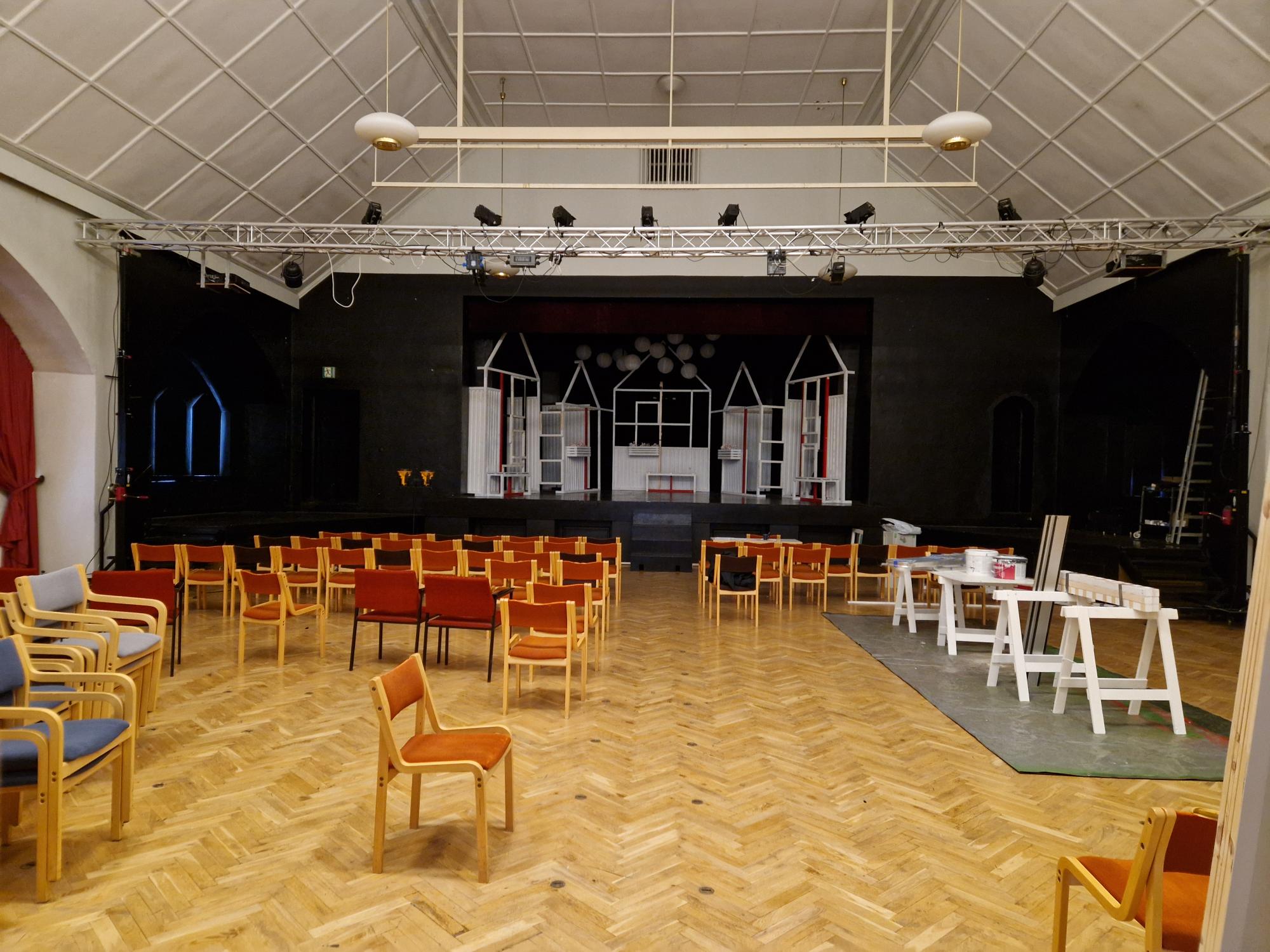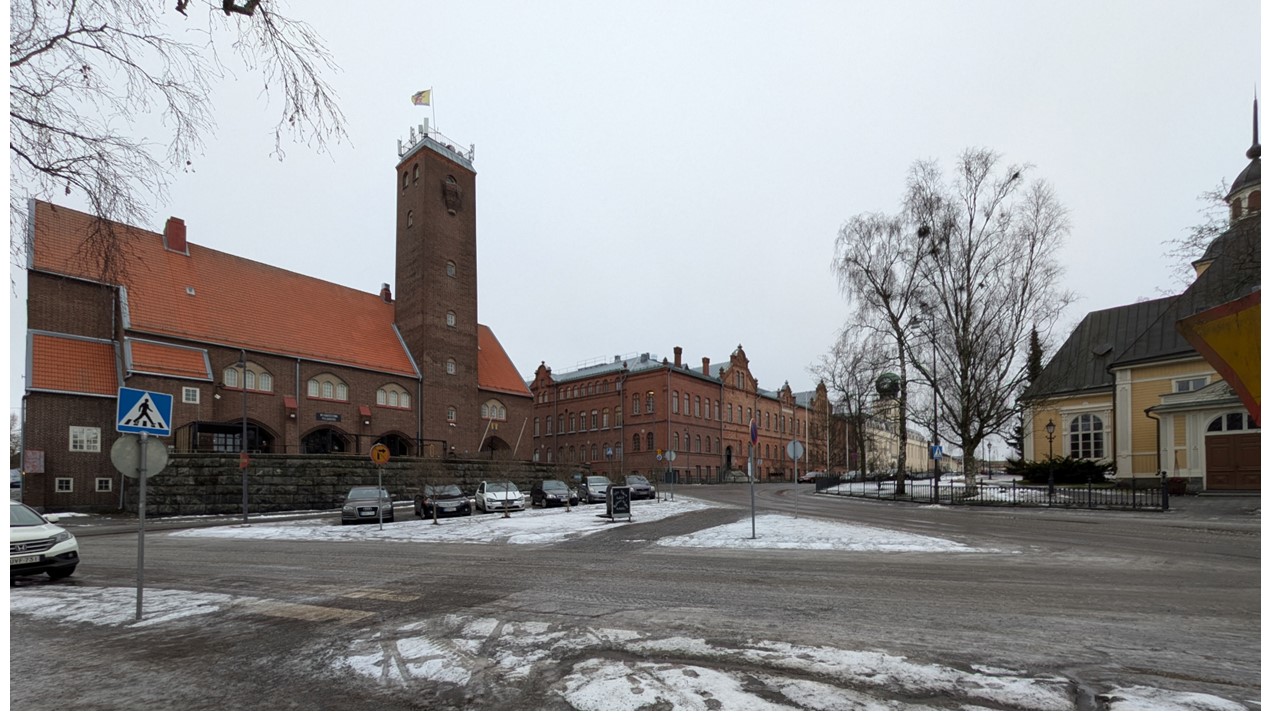Regeneration of the Old Fire Station
Regeneration of the Old Fire Station in Jakobstad
The old fire station in Jakobstad was built in 1912-1913 and was bought by the town in 1926. The original meaning of the building was to house the fire brigade but also to be a place for all the town's associations. The two amateur theaters Teater Jakob and Pietarsaaren Näyttämö have been in the building since the beginning but there hasn't been room for other associations. The building is in desperate need of renovation and optimizing of spaces to increase the usage of the building.
Finland
Christinegatan 2, 68600 Jakobstad, Finland
Early initiative
Yes
Yes
Yes
No
No
598: Jakobstad (FI)
The initiative is about increasing the usage of the old fire station, by taking advantage of the building’s potential for various users. To do this the building has to be renovated. The renovation concerns: 1. the installing of an elevator into the tower; 2. functional and flexible space arrangements for the second floor including the main hall; 3. Basement: space arrangements that support the activities. The target group is the current users of the building (the amateur theaters) but also new users (mainly associations and other players in the cultural field). The elevator will make the building accessible for disabled persons and the accessible inner connection from outside to the elevator is a prerequisite for effective use of the building. Theater props can be produced in the basement and moved upstairs with the elevator and the same goes for larger musical instruments. The renovation of the main hall will optimize the usage of space and modernize infrastructure that is vital for the theaters, such as the scene, storage, sound, lighting etc. It will also enable simultaneous events in the building. The basement, which is now mainly a storage place, will be transformed into club rooms and spaces that can be booked for associations and other groups of people.
The overall aim is to make the old fire station a so called Third Place (the first and second place being home and workplace), with consideration to the already existing tenants of the building. The building is in the town's ownership and is neutral ground, i.e. it has no political affiliations to any specific political party. The renovation process is parallel to the already started and continuing process of involving the residents and the users of the building in regenerating the old fire station to a place that is open for all, easy to access and affordable. We expect that the old fire station will be considered a cultural hub/hang around place with significantly higher usage than before.
The overall aim is to make the old fire station a so called Third Place (the first and second place being home and workplace), with consideration to the already existing tenants of the building. The building is in the town's ownership and is neutral ground, i.e. it has no political affiliations to any specific political party. The renovation process is parallel to the already started and continuing process of involving the residents and the users of the building in regenerating the old fire station to a place that is open for all, easy to access and affordable. We expect that the old fire station will be considered a cultural hub/hang around place with significantly higher usage than before.
increase of usage
inclusion
third place
usability
togetherness
The renovation will entail energy optimization which will reduce energy consumption. This is an ecologically as well as an economically sustainable solution. Furthermore, the building is an over 100-year-old aesthetic and well-known landmark for Jakobstad with a rich and respectable history. Therefore, a cautious renovation of the building with respect for the cultural and historic value it possesses, is a sustainable deed in itself. The renovation will also entail social sustainability, since the town will be able to offer its residents and associations a meeting place that is inclusive, affordable and equipped with all necessary infrastructure for any cultural event. The initiative is also about cultural sustainability – within the Cultural Pearl project (see more further on) the old fire station mirrors our town’s cultural heritage, both materially and immaterially. When the renovation is completed, the building will be available for new users, such as ethnic minorities and this gives possibilities for dialogues between different cultures.
The old fire station was built 1912-1913 and is a beautiful red-tile building located in the heart of Jakobstad. The architect was Torben Grut, a well-known Swedish architect. Torben Grut is known as the architect of Stockholm Stadium, that was built for the summer Olympics in Stockholm in 1912. The old fire station and the buildings in its direct vicinity are part of a larger architectural history that tells the story of the town's industrialization. The building is surrounded by the town's church from 1731, mighty industrial buildings from the turn of the 19th and 20th centuries, also designed by internationally renowned architects, as well as the wooden residential buildings of industrial workers and sailors. The exterior of the building is protected by the Finnish Heritage Agency which means it cannot be demolished, and its exterior cannot be changed. The changes in the interior will be done with respect to the original shapes and structures. Especially the main hall will not change in any significant manner to the visual observer. However, the underlying infrastructure (electricity, logistical solutions, sound, light, ventilation and insulation) will be completely renewed. The basement, which has previously practically been no man's land, except for the current users, will be completely transformed. The space in the basement will be optimized for future heavy use and above all: available for use for the residents of Jakobstad. We hope that the initiative that we have going on with the old fire station with involving the town's residents and other stakeholders is an exemplary case in terms of a town cooperating with and including their residents in (re)creating a public space.
In 2024 Jakobstad was awarded the Baltic Sea Region Cultural Pearl-title, together with three other towns/cities in the Baltic Sea Region. The project aimed to strengthen social resilience in municipalities by harnessing the potential of local assets of culture and creativity. Our social resilience plan was about overcoming hardships - disagreements between language groups; Finnish speaking people moving away from Jakobstad; insufficient cooperation between language groups and to prevent isolation and loneliness. In Jakobstad around 54 percent are Swedish speaking, around 31 percent are Finnish speaking, and 15 percent has another mother tongue. The key component of the plan was the old fire station, which is - as stated before - in the town's ownership, considered neutral ground, and originally meant to be a meeting place for the town's associations. We organized three social events in the old fire station during the Cultural pearl year 2024. The project didn't contribute to the renovation of the building in a financial way, but thanks to the Cultural Pearl-title, we got visibility for the building. We also engaged the residents and the current and future users of the building in many ways in trying to find future uses of the building and in involving them in the renovation planning. The outcome of these discussions has been the basis for the renovation process that now has taken its first steps.
The old fire station had a central role in the Cultural Pearl-year 2024. We organized three social events there that were open for all residents in Jakobstad. We marketed the events on social media, on the town's web page, with press releases, with flyers all over town and we did surveys via the town's resident panel Jeppis Gallup. The resident panel (870 residents are part of it) gets every second week a survey "The Question of the Week" on a specific topic concerning the town's activities. On two different occasions we consulted the panel regarding the Cultural Pearl-project. In the surveys and in the social events we received valuable input from the residents for the future use of the old fire station. During the cultural pearl year 2024 we have also organized four meetings with the current users of the building. Some of these meetings have been extended with occasional or prospective users of the building. Jakobstad has a relatively high number of ethnical minorities, we have around 60 different languages spoken here. For example, the Nepalese association “Jeppis-Nepal klubb” has been actively involved in the cultural pearl activities and they have also arranged many of their events in the old fire station. All of these stakeholders’ impact has been very valuable for the whole renovation process, and we now have a clear view of what the renovation will entail and what needs to be done. The process hasn't been easy, because the amateur theaters have been in the building for over 100 years and tend to think of the building as theirs and have been reluctant with the plans of increasing the usage of the building. After many discussions we think that we now have a common understanding with the amateur theaters, because they see that they can still be as active as before in the building after the renovation even though it can also be used by other players. The renovation will allow for much more flexible and smooth co-existing solutions than the current situation.
The main stakeholders are of course the current users of the building, i.e. both amateur theaters and the restaurant Station 23 that renovated a part of the first floor (the depot, where the fire trucks used to be) and opened a very popular fine dining restaurant there in 2021. The space used by the restaurant is not part of the current renovation initiative. The voluntary fire brigade (FBK), who was the original owner of the building still use a part of the basement, but they are willing to move out if they find a better space for them. The part of the basement that they use, is also not part of the current renovation initiative. However, all the current users will of course benefit from the elevator in the tower. The installing of an elevator is one of the most important parts of the whole renovation initiative. There is also reason to mention that on the third floor of the building there is an on-going renovation of three apartments. This renovation is done by the vocational school Optima as a part of their students’ education. The renovation of the three apartments on the third floor are planned to be finished in the end of 2026 and is also not a part of this current renovation initiative.
We have had several meetings and get-togethers with the current users of the building, but we have also engaged occasional and prospective users in some of these meetings. The residents that have taken part in the "Question of the week" and participated in the social events during the Cultural Pearl year 2024 have also been engaged in the planning of the renovation initiative. During the Cultural Pearl year Jakobstad had the opportunity to organize a Culture for Resilience Forum at the Old Fire Station 7-8 May 2024 and of the 100 guests, over 50 were from other countries in the Baltic Sea Region. In many of the workshops during the forum the future use of the old fire station was a topic, so in that sense we have also received feedback on a national and European level.
We have had several meetings and get-togethers with the current users of the building, but we have also engaged occasional and prospective users in some of these meetings. The residents that have taken part in the "Question of the week" and participated in the social events during the Cultural Pearl year 2024 have also been engaged in the planning of the renovation initiative. During the Cultural Pearl year Jakobstad had the opportunity to organize a Culture for Resilience Forum at the Old Fire Station 7-8 May 2024 and of the 100 guests, over 50 were from other countries in the Baltic Sea Region. In many of the workshops during the forum the future use of the old fire station was a topic, so in that sense we have also received feedback on a national and European level.
The town has a working group for the renovation initiative of the old fire station consisting of the town's employees from the town executive office, the technical department (mainly from the property administration), the culture and leisure department and from the town's museum services. From the property administration there is an architect and a property developer engineer, that have been heavily involved in the planning of the renovation. There has also been done an inspection of the condition of the building by an external consultant. Furthermore, an acoustics consultant has done a report on logistics, sound and lighting for the building. We have recently applied for external funding for the renovation initiative from the Finnish Ministry of Education and Culture and we are also planning of seeking funding from various funds and foundations in Finland. The renovation is planned to start in the end of 2025 and will last for approximately two years.
In order to be able to apply for funding from the Ministry of Education and Culture, we had to attach around 14 different attachments with precise plans on the renovation process, including the decision from the Technical committee of 18 December 2024 that the town is investing 1 million euro in the renovation project for the following three years, under the condition that we will get 50 percent external funding as well. The total costs of the renovation project are estimated to be 2 million euros.
In our experience the multidisciplinary working group with their different fields of expertise, combined with the regular meetings with the users of the building and the feedback from our different events and surveys during the Cultural Pearl year has been very good for the whole initiative and the renovation process. We feel that we have done a solid background work and feel confident taking the next steps forward.
In order to be able to apply for funding from the Ministry of Education and Culture, we had to attach around 14 different attachments with precise plans on the renovation process, including the decision from the Technical committee of 18 December 2024 that the town is investing 1 million euro in the renovation project for the following three years, under the condition that we will get 50 percent external funding as well. The total costs of the renovation project are estimated to be 2 million euros.
In our experience the multidisciplinary working group with their different fields of expertise, combined with the regular meetings with the users of the building and the feedback from our different events and surveys during the Cultural Pearl year has been very good for the whole initiative and the renovation process. We feel that we have done a solid background work and feel confident taking the next steps forward.
Usually when the town of Jakobstad renovates one of its buildings, it is a political decision based on a civil servant's preparation to a committee and depending on the scope of the renovation project it may have to be approved also by the town's council. There is seldom any kind of participatory element in this process. The current renovation initiative for the old fire station stands out in that sense, since the town has consulted both the users of the building and its residents on several occasions during the Culture Pearl Year 2024. The town of Jakobstad has, as many other towns, economical challenges and a renovation of a building that isn't a school or a kindergarten is by no means something that is easily approved of. Therefore, the Cultural Pearl Year 2024 with all the focus on the Old Fire Station in media and in the town's communication channels have been very helpful for this renovation initiative. It put the building in the limelight and has gotten people talking about the building and the upcoming renovation. All of this has contributed to paving the way for a much smoother political process for approving of the renovation. The innovative character would therefore be the participatory approach that has been used and the town's willingness to renovate a building for its residents to use.
During one of the social events that we organized during the Cultural Pearl Year we had a guest speaker Timo Santala, who is the CEO of We love Helsinki and the developer of the Restaurant Day that has spread across the world. He held an inspirational speech and organized a workshop where the residents of Jakobstad could discuss different events that could be held in the old fire station. One key issue that Timo stressed was that we shouldn't wait with contemplating on how to increase the usage of the old fire station until the renovation is finished. The renovation will take time and there is a risk that there will be an anticlimax with the whole initiative if we don't try to increase the usage of the building immediately. We took this to heart, and we have seen a remarkable increase of the usage of the building last autumn. There remains the problem of coexisting in the building at the same time as the theaters have their rehearsals and theater plays with their props all over the main hall, but we see a change in attitude, a bigger flexibility and a common purpose that we haven't seen before. The small battles we have had during the discussions have had the positive outcome that we are in this together, we all share the same vision for the old fire station. Everybody is on board with the fact that a renovation is needed and that there is a positive thing with increasing the usage and opening the doors also for new cultural players in the old fire station. It is a win-win situation for everybody, the restaurant is pleased to see more people in the building, the theaters are pleased to see that we listen to their needs and the efforts that the town has taken to consider their future existing in the building, the future users are pleased to hear that the town will soon be able to offer them a place that is affordable and with all necessary infrastructure set in place and the residents are excited to see one of the town's crown jewels getting an up-lift.
I think that our participatory approach in an initiative concerning the renovation of a public building can be replicated in any other town or city. Of course, it helped us very much that we were obliged to organize the social events and keep some form of rapport with the residents as part of the Cultural Pearl year. Without this project I think it would have been much harder for us to muster the energy to go through the process with all arrangements and discussions that we had with the different stakeholders, but of course it can be done. It also helps if there is a political will on a high level and that the initiators can influence different stakeholders. It also requires tenacity, toil and responsiveness from the people that are involved in the initiative.
The challenges we have had are probably quite like what occurs all over the world in similar cases. For us the way forward was in bringing people together, laying the cards on the table and being prepared to discuss with each other in an open and constructive manner. Because we spent a whole year getting the residents and the stakeholders aware of our plans for the old fire station in a very transparent way, we have given people time to think it over and getting used to the idea of spending the town's money on an old building. I think that most people can see the greater good with the initiative because it is for a good cause, it is inclusive and even though the building is old, it is beautiful and worth restoring.
We now have a plan for how the renovation will be done, the town's interdisciplinary working group has applied for the single biggest possible grant from the Ministry of Education and Culture. We are hopeful that we will get the grant and are now looking at other funding opportunities. We will be keeping meetings whenever necessary and many people in the working group are in regular contact with the current users of the old fire station. We hope that the old fire station will become a people’s house, the way it was originally intended and that its doors are open for everybody regardless of language or heritage. The town has a key role in making this happen and we will continue to keep a good rapport with the current users, future users and the residents of Jakobstad also hence forth. The NEB values of sustainability, inclusion and aesthetics are very much in line with our initiative as you have seen in this application.

